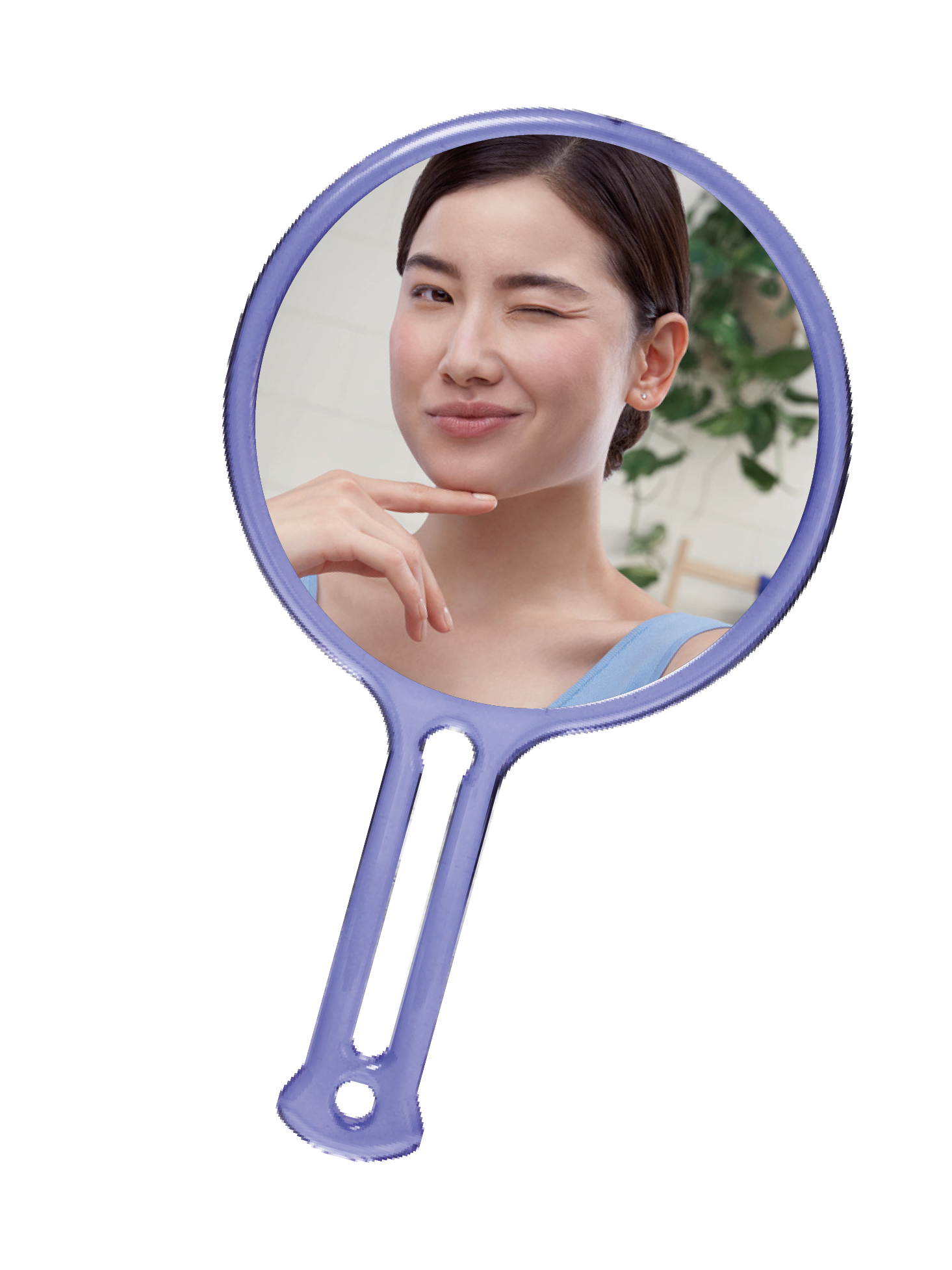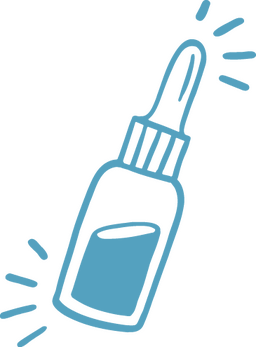
Step away from the mirror! Popping that zit is a really





We’ve all been there. You wake up
one morning and look in the
mirror only to come face to
face with a squeezable zit
that’s taken up residence on
your skin overnight. For
most people, their first
instinct is to pop it. (For
those who can resist, are you
okay? LOL!) No one likes the
idea of walking around with
visible whiteheads and
blackheads, but if you are squeezing your spots thinking that
this is how you get rid of your breakouts,
you’ve got the wrong understanding of how to
treat spots. And, as satisfying as it might be, the truth is you run the big risk of causing lasting damage.
The first reason that popping pimples is a bad idea has to do with the fluid inside of them. When it comes to hard-to-resist whiteheads – something that occurs when the hair follicles become inflamed and infected – they generally contain pus. Eww, but true. This pus contains microscopic bacteria that, if spread across your face, can lead to further breakouts. The act of squeezing can also push the pus down deeper into your skin, causing the area to become more red and angry.


Our fingers are also a hotbed of bacteria and having them come into contact with a raw, freshly popped zit, and the exposed wound it creates, can spread germs from your hands onto other parts of your face. So it’s not just a gross habit, but also counterproductive, and this seemingly ‘quick fix’ can lead to long-lasting problems. Don’t be fooled!
Need another reason? Scarring. Yes, sometimes even if you leave your spots alone, you can still be left with some dark marks. This is known as post-inflammatory hyperpigmentation and using certain skincare ingredients can fade them over time. But when you pick at your blemishes, you are WAY more at risk of developing scars, which can appear as dents in your skin or raised bumps. These are a lot more difficult to treat, as there has been more trauma to the skin and will make your complexion – even without zits – look less than flawless.
As the old saying goes, ‘Prevention is better than cure.’ In other words, taking good care of your skin can limit the occurrence of blemishes on your skin and, therefore, you will have less temptation to pop. Create and adhere to a consistent skincare routine with products that contain ingredients designed to clear up spotty skin while keeping it soothed and moisturised. By doing this, you stand the best chance of achieving your clear skin #goals.
We’ve all been there. You wake up one
morning and look in the mirror to
come face to face with a
squeezable zit that’s taken up
residence on your skin overnight.
For most people, their first
instinct is to pop it. (For those who
can resist, are you okay? LOL!) No one
likes the idea of walking around with
visible whiteheads and blackheads, but if you are squeezing your spots thinking that


this is how you get rid of your breakouts, you’ve got the wrong understanding of how to treat spots. And, as satisfying as it might be, the truth is you run the big risk of causing lasting damage.
The first reason that popping pimples is a bad idea has to do with the fluid inside of them. When it comes to hard-to-resist whiteheads – something that occurs when the hair follicles become inflamed and infected – they generally contain pus. Eww, but true. This pus contains microscopic bacteria that, if spread across your face, can lead to further breakouts. The act of squeezing can also push the pus down deeper into your skin, causing the area to become more red and angry.
Our fingers are also a hotbed of bacteria and having them come into contact with a raw, freshly popped zit, and the exposed wound it creates, can spread germs from your hands onto other parts of your face. So it’s not just a gross habit, but also counterproductive, and this seemingly ‘quick fix’ can lead to long-lasting problems. Don’t be fooled!
Need another reason? Scarring. Yes, sometimes even if you leave your spots alone, you can still be left with some dark marks. This is known as post-inflammatory hyperpigmentation and using certain skincare ingredients can fade them over time. But when you pick at your blemishes, you are WAY more at risk of developing scars, which can appear as dents in your skin or raised bumps. These are a lot more difficult to treat, as there has been more trauma to the skin and will make your complexion – even without zits – look less than flawless.
As the old saying goes, ‘Prevention is better than cure.’ In other words, taking good care of your skin can limit the occurrence of blemishes on your skin and, therefore, you will have less temptation to pop. Create and adhere to a consistent skincare routine with products that contain ingredients designed to clear up spotty skin while keeping it soothed and moisturised. By doing this, you stand the best chance of achieving your clear skin #goals.
We've all been there. You
wake up one morning
and look in the mirror
to come face to face
with a squeezable zit
that’s taken up
residence on your skin
overnight. For most
people, their first instinct
is to pop it. (For those who
can resist, are you okay? LOL!)
No one likes the idea of walking
around with visible whiteheads and
blackheads, but if you are squeezing


your spots thinking that this is how you get rid of your breakouts, you’ve got the wrong understanding of how to treat spots. And, as satisfying as it might be, the truth is you run the big risk of causing lasting damage.
The first reason that popping pimples is a bad idea has to do with the fluid inside of them. When it comes to hard-to-resist whiteheads – something that occurs when the hair follicles become inflamed and infected – they generally contain pus. Eww, but true. This pus contains microscopic bacteria that, if spread across your face, can lead to further breakouts. The act of squeezing can also push the pus down deeper into your skin, causing the area to become more red and angry.
Our fingers are also a hotbed of bacteria and having them come into contact with a raw, freshly popped zit, and the exposed wound it creates, can spread germs from your hands onto other parts of your face. So it’s not just a gross habit, but also counterproductive, and this seemingly ‘quick fix’ can lead to long-lasting problems. Don’t be fooled!
Need another reason? Scarring. Yes, sometimes even if you leave your spots alone, you can still be left with some dark marks. This is known as post-inflammatory hyperpigmentation and using certain skincare ingredients can fade them over time. But when you pick at your blemishes, you are WAY more at risk of developing scars, which can appear as dents in your skin or raised bumps. These are a lot more difficult to treat, as there has been more trauma to the skin and will make your complexion – even without zits – look less than flawless.
As the old saying goes, ‘Prevention is better than cure.’ In other words, taking good care of your skin can limit the occurrence of blemishes on your skin and, therefore, you will have less temptation to pop. Create and adhere to a consistent skincare routine with products that contain ingredients designed to clear up spotty skin while keeping it soothed and moisturised. By doing this, you stand the best chance of achieving your clear skin #goals.







Drying out your skin is not going to make it look better
When you sprout a new spot, does your family ever tell you to put a blob of toothpaste on it and leave it overnight? Or maybe a paste made from bicarbonate of soda and water? Or maybe even a squeeze of fresh lemon juice? They might mean well, but they are sadly very mistaken if they think that these ingredients are a legitimate method for getting rid of zits. It
comes from the misconception that
using drying ingredients will
absorb excess oil from your
pores (which it will, but to
your skin’s detriment) and
‘dry out’ pesky whiteheads.
This is often linked to the
same bad-for-you belief
that people with oily skin
shouldn’t wear moisturiser
as the grease keeps their
skin sufficiently soft and supple.
Well, consider both of these
theories debunked because this isn’t
going to make your skin clear. Yes, you read that right. Instead, it can lead to a whole lot of other problems. The biggest one is that these strong, concentrated
ingredients can aggravate your skin, leaving behind, at best, discolouration but even scars, and they are much more long-lasting and harder to diminish than a breakout. What’s more, you can also compromise

your skin’s protective barrier, which can result in further irritation and – drumroll – more pimples!
Want the truth?
All skin types – yes, even the oiliest ones! – can benefit
from using a moisturiser. It all just comes
down to selecting one designed with your
skin type in mind. A rich, thick formula
might not be the best fit if you tend to
get greasy, so look for something
lightweight and non-comedogenic that
won’t clog your pores or feel heavy on
your skin. As far as ingredients go,
salicylic acid is the gold standard
when it comes to balancing sebum
production, banishing breakouts
and keeping skin clear.
An ingredient that works well in conjunction
with salicylic acid to replenish any lost moisture is hyaluronic acid – a powerful but gentle molecule that can hold one thousand times its weight in water. When applied to damp skin, it
traps the excess water to keep skin hydrated for
longer, counteracting any drying effects. This way, you get all of the clarity and all of the glow at the same time. #Winning!

Words: Helen Wallace







Drying out your skin is not going to make it look better
When you sprout a new spot, does your family ever tell you to put a blob of toothpaste on it and leave it overnight? Or maybe a paste made from bicarbonate of soda and water? Or maybe even a squeeze of fresh lemon juice? They might mean well, but they are sadly very mistaken if they think that these ingredients are a legitimate method for getting rid of zits.
It comes from the misconception that using drying ingredients will absorb excess oil from your pores (which it will, but to your skin’s detriment) and ‘dry out’ pesky whiteheads. This is often linked to the same bad-for-you belief that people with oily skin shouldn’t wear moisturiser as the grease keeps their skin sufficiently soft and supple.
Well, consider both of these theories debunked because this isn’t going to make your skin clear. Yes, you read that right. Instead, it can lead to a whole lot of other problems. The biggest one is that these strong, concentrated ingredients can aggravate your skin, leaving behind, at best, discolouration but even scars, and they are much more long-lasting and harder to diminish than a breakout. What’s more, you can also compromise your skin’s protective barrier, which can result in further irritation and – drumroll – more pimples!

want the truth?
All skin types – yes, even the oiliest ones! – can benefit from using a moisturiser. It all just comes down to selecting one designed with your skin type in mind. A rich, thick formula might not be the best fit if you tend to get greasy, so look for something lightweight and non-comedogenic that won’t clog your pores or feel heavy on your skin. As far as ingredients go, salicylic acid is the gold standard when it comes to balancing sebum production, banishing breakouts and keeping skin clear.
An ingredient that works well in
conjunction with salicylic acid to
replenish any lost moisture is hyaluronic
acid – a powerful but gentle molecule
that can hold one thousand times its
weight in water. When applied to damp
skin, it traps the excess water to keep skin
hydrated for longer, counteracting any
drying effects. This way, you get all of
the clarity and all of the glow at the
same time. #Winning!
All skin types – yes, even the oiliest ones! – can benefit from using a moisturiser. It all just comes down to selecting one designed with your skin type in mind. A rich, thick formula might not be the best fit if you tend to get greasy, so look for something lightweight and non-comedogenic that won’t clog your pores or feel heavy on your skin. As far as ingredients go, salicylic acid is the gold standard when it comes to balancing sebum production, banishing breakouts and keeping skin clear.
An ingredient that works well in conjunction with salicylic acid to
replenish any lost moisture is
hyaluronic acid – a powerful but
gentle molecule that can hold
one thousand times its weight in water. When applied to damp
skin, it traps the excess water
to keep skin hydrated for longer, counteracting any drying
effects. This way, you get
all of the clarity and all of
the glow at the same time.
#Winning!

Words: Helen Wallace

